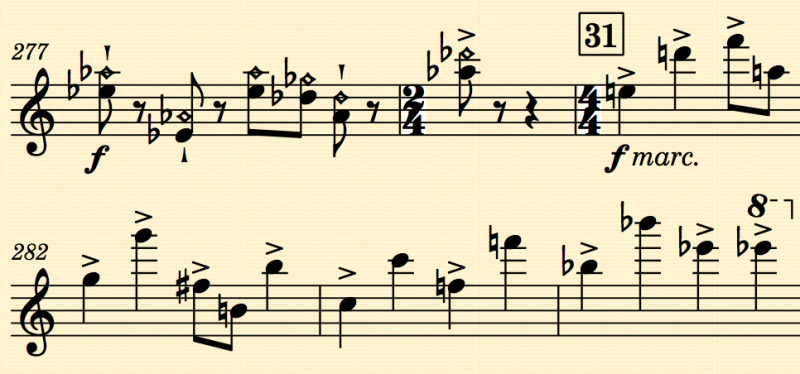

The Mixer allows you to control the volume, panning, and sounds of channels in playback.

You can access the Key Editor in the Key Editor panel in the lower zone. It allows you to edit notes and other playback items, including note velocity, MIDI CC, and tempo. The Key Editor is a MIDI editor that comprises multiple components. You can access properties in the Properties panel. Properties are settings that apply to individual notes and items and allow you to edit them, such as by changing their appearance or position.
#DORICO FONTS PRO#
The formatting of pages in Dorico Pro is determined by a number of factors, including the layout’s staff size, page margins, the page template applied to them, any casting off values applied to them, system and frame breaks, and frame padding.
#DORICO FONTS PDF#
Print mode allows you to print your layouts or to export them as graphics files, such as PDF and SVG. Play mode allows you to change how your music sounds in playback, including by adjusting the mix, changing the playback template, and assigning VST instruments. You can also determine how the pages in each layout of your project are formatted for printing or exporting. The available toolboxes and panels allow you to input all the notes and notation items that are most commonly used.Įngrave mode allows you to manipulate and modify every item in your project, but without deleting them, moving them rhythmically, or changing the pitch of notes. Write mode allows you to input and edit your music, including changing the rhythmic positions of items, changing the pitch of notes, and deleting notes and items. You can also determine how they interact with each other for example, by changing the players assigned to layouts. Setup mode allows you to set up the fundamental elements of the project: instruments and the players that hold them, flows, layouts, and videos. In addition to opening and importing/exporting projects and other file formats, project and file handling also includes auto-save and project backups. This chapter introduces you to key aspects of the user interface. The user interface of Dorico Pro is designed to keep all of the important tools at your fingertips. Whichever period of music you deal with, November 2 will make your score look beautiful and vibrant, as never before.Dorico is based on a number of key concepts that come from its design philosophy.

While in tune with the most recent technologies, its inspiration comes from the art of traditional music engraving. November was one of the first digital music typefaces to mimic the slightly weathered look of traditional music engraving, with its slightly rounded terminals producing a warmer image through its carefully reproduced imperfections, just as the metal punches used in engraving would wear away slightly after years of repeated use.įor use in programs such as Finale, Sibelius, Dorico or LilyPond, November 2 now includes much greater variety of symbols, from usual shapes such as noteheads, clefs and rests to rarer characters like microtonal accidentals, early ornaments and clefs, or special instrument techniques, ranging from the Renaissance to today’s avant-garde music.īased on the principle that each detail means as much as the whole, crafted with ultimate care, November 2 is a font of unequaled coherence. November, designed by notation expert Robert Piéchaud, has been praised for years by musicians, publishers and engravers as one of the finest and most vivid fonts ever designed for music notation software.


 0 kommentar(er)
0 kommentar(er)
